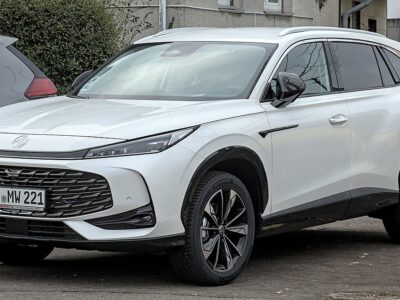
MG HS vs Nissan Qashqai (2023–2024): Full UK Comparison
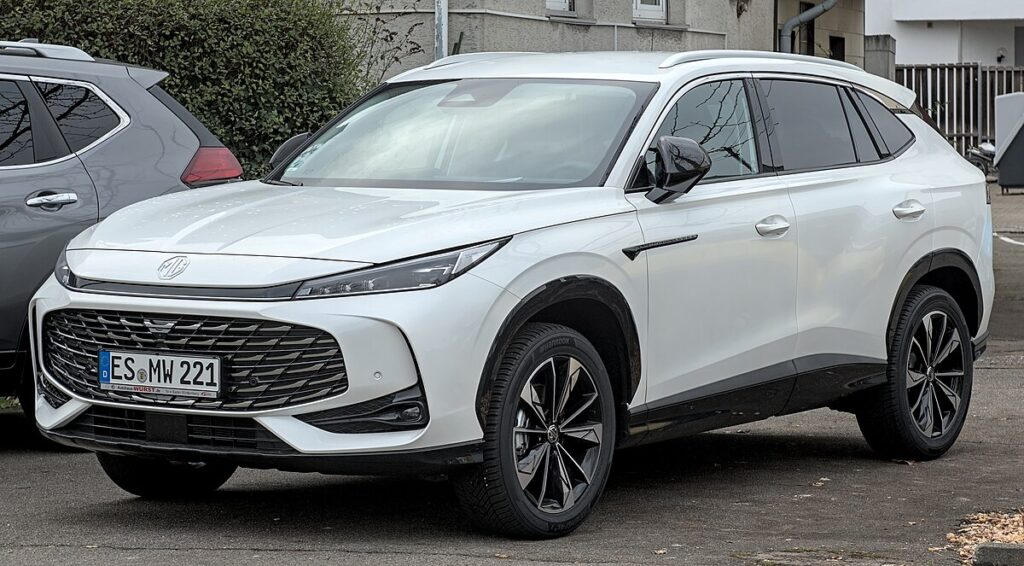
In the ever-competitive compact SUV segment, two names stand out for British buyers — the MG HS and the Nissan Qashqai. Both have evolved to deliver a compelling blend of design, practicality, and technology. Yet, their approaches differ significantly: MG prioritises value and space, while Nissan focuses on refinement, electrification, and driving polish.
This detailed comparison explores how each model performs across key areas — design, engine efficiency, technology, safety, comfort, and cost of ownership — to determine which SUV better fits the needs of UK drivers in 2024.
- Exterior Design and Road Presence
- Interior Comfort and Cabin Design
- Engine Line-Up and Powertrains
- Performance and Handling
- Fuel Economy and Emissions
- Practicality and Boot Space
- Technology and Infotainment
- Safety and Driver Assistance
- Ride Comfort and Refinement
- Reliability and Warranty
- Pricing and Value for Money (UK 2024)
- Ownership Costs
- Environmental Impact and Electrification
- Verdict: MG HS vs Nissan Qashqai – Which Wins?
- Frequently Asked Questions
Exterior Design and Road Presence
MG HS: Confident and Contemporary
The MG HS strikes a bold figure on UK roads, blending muscular proportions with a distinctly European aesthetic. Its large starlight grille, LED headlamps, and chrome detailing create an upmarket look that belies its competitive pricing. Measuring 4,610 mm long, it’s larger than most rivals in its class, translating to more interior space and a commanding stance.
Nissan Qashqai: Sharp and Aerodynamic
The Nissan Qashqai, proudly built in Sunderland, remains one of Britain’s best-selling SUVs for good reason. The latest design iteration introduces sharp LED matrix headlights, 20-inch alloys, and a floating roofline. At 4,425 mm in length, it’s shorter than the MG HS, prioritising agility and urban manoeuvrability over outright presence.
Interior Comfort and Cabin Design
MG HS: Spacious and Value-Focused
Inside, the MG HS surprises with its premium-feeling materials, soft-touch dashboard, and generous standard equipment. Leather-style upholstery, ambient lighting, and heated front seats are available even on mid-range trims like SE and Trophy.
With a boot capacity of up to 463 litres, the HS offers strong practicality, although it’s marginally smaller than the Qashqai’s 504 litres. Rear passengers benefit from ample legroom — one of the most spacious cabins in its segment.
Nissan Qashqai: Sophisticated Minimalism
The Qashqai’s cabin feels more mature and high-end. Nissan’s ergonomic design and 12.3-inch digital driver display elevate the interior experience. The ProPILOT Assist interface integrates driver-assist features directly into the cluster, improving usability on long journeys.
The materials and craftsmanship — especially in Tekna+ trim — rival those of pricier German alternatives. The boot’s 504-litre capacity is cleverly designed with a split-level floor for versatile loading.
Engine Line-Up and Powertrains
MG HS Powertrains
- 1.5-litre Turbo Petrol (162 bhp)
- 0–62 mph: 9.9 seconds
- Transmission: 6-speed manual or 7-speed DCT
- Combined economy: 36–38 mpg
- 1.5-litre Plug-in Hybrid (PHEV) (258 bhp combined output)
- Electric range: 32 miles (WLTP)
- Economy: 155 mpg (official combined)
- CO₂: 43 g/km
- 10-speed automatic gearbox
The PHEV version offers a compelling balance between efficiency and performance, particularly appealing for company-car drivers thanks to its 12% BiK rate.
Nissan Qashqai Powertrains
- 1.3-litre Mild-Hybrid Petrol (138–156 bhp)
- Transmission: 6-speed manual or Xtronic CVT
- Fuel economy: 44–48 mpg
- 1.5-litre e-POWER Hybrid (190 bhp)
- Electric drive motor with petrol generator
- 0–62 mph: 7.9 seconds
- Fuel economy: 53–55 mpg
- CO₂: 119 g/km
Nissan’s e-POWER system stands out for delivering an EV-like driving experience without the need to plug in. It’s smooth, quiet, and efficient — perfect for city commuting and suburban journeys.
Performance and Handling
MG HS: Composed but Comfort-Oriented
The MG HS prioritises ride comfort over sporty handling. Its suspension absorbs rough surfaces admirably, ideal for long motorway drives or British backroads. The steering, while light, offers decent feedback, and the DCT gearbox performs well once in motion, though low-speed shifts can occasionally feel hesitant.
The PHEV variant provides brisk acceleration (0–62 mph in 6.9 seconds), positioning it among the quickest SUVs in its class.
You may be interested in reading MG HS vs Hyundai Tucson: The Ultimate Compact SUV Comparison for 2025/26 Buyers
MG HS vs Hyundai Tucson: The Ultimate Compact SUV Comparison for 2025/26 BuyersNissan Qashqai: Balanced and Engaging
The Qashqai’s lightweight CMF-C platform delivers nimble, composed handling. It corners with more confidence than the MG HS and maintains a firmer yet controlled ride. The e-POWER variant’s instant torque makes urban driving seamless, while regenerative braking improves efficiency in stop-start traffic.
The Qashqai’s steering precision and body control give it an edge in driver engagement, although the HS counters with superior straight-line comfort.
Fuel Economy and Emissions
| Model | Powertrain | Transmission | Combined mpg (WLTP) | CO₂ (g/km) |
|---|---|---|---|---|
| MG HS 1.5T Petrol | Manual / DCT | 36–38 mpg | 168–175 | |
| MG HS PHEV | Auto (Hybrid) | 155 mpg | 43 | |
| Nissan Qashqai 1.3 MH | Manual / CVT | 44–48 mpg | 134–146 | |
| Nissan Qashqai e-POWER | Auto (Hybrid) | 53–55 mpg | 119 |
The Qashqai clearly wins on fuel economy, while the MG HS PHEV dominates low-emission commuting for those able to charge at home.
Practicality and Boot Space
| Model | Seats | Boot Space | Max Load Capacity | Roof Load | Towing Capacity |
|---|---|---|---|---|---|
| MG HS | 5 | 463 L | 1,454 L | 75 kg | 1,750 kg |
| MG HS PHEV | 5 | 448 L | 1,375 L | 75 kg | 1,500 kg |
| Nissan Qashqai | 5 | 504 L | 1,447 L | 75 kg | 1,800 kg |
While the Qashqai provides a slightly larger boot, the MG HS offers greater towing capacity and rear legroom — an important factor for family buyers.
Technology and Infotainment
MG HS
The MG HS includes a 10.1-inch touchscreen with Apple CarPlay and Android Auto, a 6-speaker audio system, and a 7-inch digital driver display. The interface is functional but not as fluid as Nissan’s system.
Higher trims feature a 360° camera, keyless entry, and MG Pilot safety suite — including lane-keep assist, adaptive cruise control, and blind-spot monitoring.
Nissan Qashqai
Nissan’s infotainment setup is more advanced. The 12.3-inch NissanConnect display, head-up display, and Bose 10-speaker system create a more premium user experience. The system’s connected services integrate live traffic, Alexa, and over-the-air updates.
Safety and Driver Assistance
Both SUVs earn strong Euro NCAP ratings (5 stars).
| Safety Feature | MG HS | Nissan Qashqai |
|---|---|---|
| Adaptive Cruise Control | ✅ | ✅ |
| Lane Keep Assist | ✅ | ✅ |
| Traffic Sign Recognition | ✅ | ✅ |
| Automatic Emergency Braking | ✅ | ✅ |
| Blind-Spot Detection | ✅ | ✅ |
| 360° Surround Camera | ✅ | ✅ |
| ProPILOT Advanced Driver Assist | ❌ | ✅ |
The Qashqai edges ahead with ProPILOT Assist and adaptive LED headlights, while the HS still provides remarkable value in its class.
Ride Comfort and Refinement
The MG HS feels softer and quieter on the motorway, especially the PHEV variant, which glides silently in EV mode. The Nissan Qashqai, though firmer, offers better cabin insulation and less wind noise, particularly at motorway speeds.
Reliability and Warranty
MG offers one of the best warranties in the UK — 7 years / 80,000 miles, transferable to subsequent owners. Nissan counters with 3 years / 60,000 miles, though its long-term reliability record is proven and consistent.
For peace of mind, MG’s warranty gives it a significant ownership advantage, particularly for buyers planning to keep the car beyond its finance term.
You may be interested in reading MG HS vs Hyundai Tucson: The Ultimate Compact SUV Comparison for 2025/26 Buyers
MG HS vs Hyundai Tucson: The Ultimate Compact SUV Comparison for 2025/26 Buyers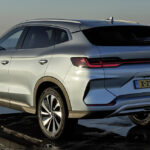 BYD Seal U vs MG HS: In-Depth Comparison to Decide the Best SUV for You
BYD Seal U vs MG HS: In-Depth Comparison to Decide the Best SUV for YouPricing and Value for Money (UK 2024)
| Model | Trim | Starting Price (OTR) |
|---|---|---|
| MG HS SE 1.5T | £24,030 | |
| MG HS Trophy 1.5T | £26,530 | |
| MG HS PHEV Trophy | £31,495 | |
| Nissan Qashqai Acenta Premium | £30,135 | |
| Nissan Qashqai N-Connecta | £32,275 | |
| Nissan Qashqai Tekna+ e-POWER | £39,895 |
The MG HS clearly undercuts the Qashqai across all trims. For under £27,000, buyers get full LED lighting, a panoramic sunroof, and advanced safety features — items often optional in the Nissan.
Ownership Costs
Servicing for both models is reasonably priced, but MG’s fixed-price service plan (around £600 for three years) offers unbeatable predictability. Nissan’s hybrid technology may incur higher long-term servicing costs, though it offsets this with lower fuel usage.
Insurance groups range from Group 16 to 24 for the MG HS and Group 15 to 27 for the Qashqai.
Environmental Impact and Electrification
The Qashqai’s e-POWER hybrid system emits as little as 119 g/km, ideal for urban clean-air zones. The MG HS PHEV, with its plug-in capability, excels in ultra-low-emission commuting when charged regularly.
For UK company-car drivers, the MG HS PHEV’s 12% Benefit-in-Kind rate makes it far cheaper to tax than the Qashqai hybrids (typically around 30%).
Verdict: MG HS vs Nissan Qashqai – Which Wins?
The Nissan Qashqai remains the benchmark for refinement, technology, and driving precision. Its e-POWER hybrid delivers remarkable efficiency for urban life, and its interior feels premium enough to rival German crossovers.
However, the MG HS fights back with unbeatable value, strong performance, and one of the best warranties in the industry. The PHEV variant particularly shines for those who can plug in regularly — delivering near-zero fuel costs for daily commutes and robust power when needed.
Final Recommendation
- Choose the MG HS if you value space, comfort, and affordability.
- Choose the Nissan Qashqai if you prioritise technology, brand prestige, and efficiency.
In pure cost-to-benefit terms, the MG HS edges the Qashqai as the better value SUV for UK families in 2024.
Frequently Asked Questions
1. Which is more reliable, the MG HS or Nissan Qashqai?
Both have solid reliability, but Nissan’s long-term reputation is stronger. MG compensates with its 7-year warranty.
2. Does the MG HS have a fully electric version?
No, but the MG HS Plug-in Hybrid (PHEV) offers up to 32 miles of electric range. For full EVs, MG offers the ZS EV.
3. Which is cheaper to run in the UK?
The Qashqai e-POWER has lower fuel costs for non-plug-in users, while the MG HS PHEV is cheaper if charged daily.
4. Which SUV is more powerful?
The MG HS PHEV (258 bhp) outperforms all Qashqai variants in outright power and acceleration.
 MG HS vs Hyundai Tucson: The Ultimate Compact SUV Comparison for 2025/26 Buyers
MG HS vs Hyundai Tucson: The Ultimate Compact SUV Comparison for 2025/26 Buyers BYD Seal U vs MG HS: In-Depth Comparison to Decide the Best SUV for You
BYD Seal U vs MG HS: In-Depth Comparison to Decide the Best SUV for You Peugeot 3008 vs MG HS: UK Market Comparison
Peugeot 3008 vs MG HS: UK Market Comparison5. What’s the boot space difference?
The Qashqai leads slightly with 504 litres, compared to the HS’s 463 litres.
If you want to know other articles similar to MG HS vs Nissan Qashqai (2023–2024): Full UK Comparison you can visit the category Blog.
Deja una respuesta

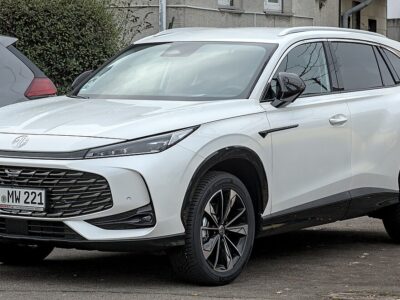
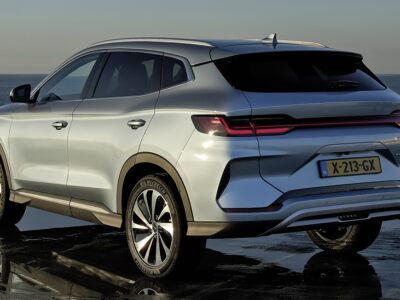
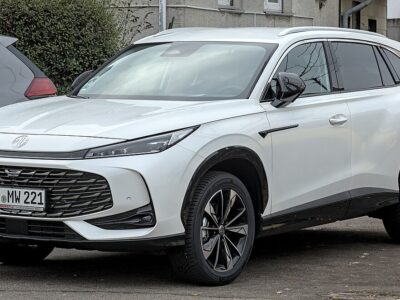
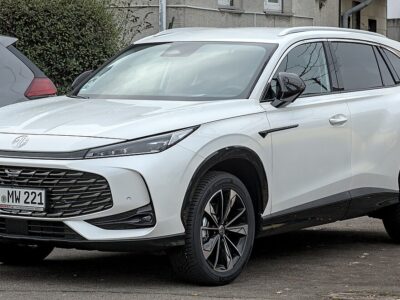
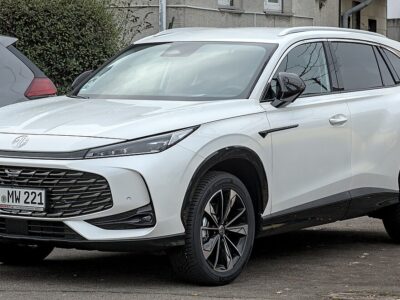
More content of your interest